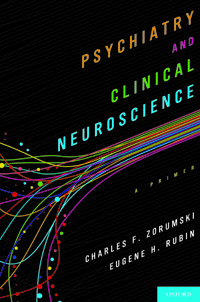This is the second book about psychiatry in 18 months from Charles F. Zorumski, MD, the Samuel B. Guze Professor and Head of Psychiatry, and Eugene H. Rubin, MD, PhD, professor of psychiatry, both at Washington University School of Medicine in St. Louis.
“We started with Demystifying Psychiatry to bring lay readers up to speed with the state of psychiatry as a branch of medicine,” Rubin says. “The new book is about how the brain actually works and what our growing understanding of that will mean to future diagnosis and treatment of psychiatric illnesses.”

As advances in neuroscience make it easier to understand how the brain works and how defects can lead to illness, Rubin and Zorumski thought it was time to connect some scientific and diagnostic “dots” for readers.
“One of the fundamental problems in psychiatry is that we call the illnesses ‘brain disorders,’ but we don’t really deal with them from a brain perspective,” Zorumski says. “We hope this book will be a start down the path of using brain network science to describe psychiatric symptoms and the defects that underlie serious psychiatric illnesses.”
Unlike their first book, Psychiatry and Clinical Neuroscience: A Primer isn’t really directed at lay readers. Zorumski says it’s designed to bring psychiatric residents and neuroscience fellows up to speed with modern brain science. But Rubin says it’s not a textbook either. The book’s goal is to help trainees better understand the science and where it may be leading the field of psychiatry.
“The language of current research in our field tends to be beyond the understanding of many residents,” Rubin says. “It’s even beyond many faculty, so there’s a disconnect between what’s reported in the journals and what’s happening at the bedside. This book is an attempt to better connect them.”
They say that unlike most textbooks, this book attempts to keep descriptions of brain function as simple as possible. When discussing how brain regions work together in networks for example, the book sacrifices detail to concentrate on the “big picture,” discussing how brain networks regulate motivation, cognition and emotions.
Zorumski says the book attempts to apply that knowledge to the cognitive and emotional disorders that psychiatrists confront each day.
“The brain makes a lot of errors,” Zorumski explains. “Many people with psychiatric disorders can’t seem to correct those errors. And we’re learning about how certain regions of the brain help us to compare our reality to new information that we’re taking in so that we can make decisions. And in the midst of that, correcting errors that our own brains may have generated is important to maintaining good mental health.”